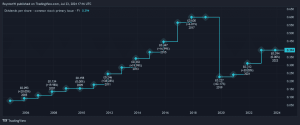The U.S. oil benchmark traded at its highest level since early August on Wednesday, after industry data shows a large fall in U.S. crude inventories ahead of official data.
West Texas Intermediate crude for October delivery
CL00,
CLV21,
rose 91 cents, or 1.3%, to $71.37 a barrel on the New York Mercantile Exchange. November Brent crude
BRN00,
BRNX21,
the global benchmark, was up 87 cents, or 1.2%, at $74.47 a barrel on ICE Futures Europe, after logging the highest close for a front-month contract since July 30 on Tuesday.
Oil “is being lent buoyancy by the supply outages in the Gulf of Mexico, which are tightening the market in the short term,” said Carsten Fritsch, commodity analyst at Commerzbank, in a note.
Hurricane Nicholas hit the Texas coast on Tuesday, bringing more rain and devastation to areas of the Gulf Coast previously inundated by Hurricane Ida in late August. Offshore oil and natural-gas production in the Gulf of Mexico has been slow to recover in the wake of Ida.
The Bureau of Safety and Environmental Enforcement late Tuesday estimated that 39.6% of offshore oil output in the Gulf remains shut in, equal to 720,217 barrels a day of production. Around 48.2% of natural-gas output is also shut in, equivalent to nearly 1.075 billion cubic feet a day of output.
Meanwhile, the American Petroleum Institute reported late Tuesday that U.S. crude supplies fell by 5.4 million barrels for the week ended Sept. 10, according to sources. The API also reportedly showed inventory declines of 2.8 million barrels for gasoline and 2.9 million barrels for distillates.
The API saw crude stocks at Cushing, Oklahoma, the delivery hub for Nymex oil futures, meanwhile, down by 1.3 million barrels for the week, sources said.
More closely followed inventory data from the Energy Information Administration will be released Wednesday. On average, the EIA is expected to show crude inventories down by 3.5 million barrels, according to a survey of analysts conducted by S&P Global Platts. The survey also calls for supply declines of 2.2 million barrels for gasoline, and 2 million barrels for distillates.
This post was originally published on Market Watch






